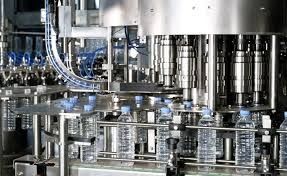Discover the Basics of Bottle Filling Machines: Types, Working, and Key Details
Bottle filling machines are specialized equipment designed to automate the process of dispensing liquids, powders, or granules into bottles or containers. These machines are used in a wide range of industries, including food and beverages, pharmaceuticals, cosmetics, and chemicals.
Their main purpose is to ensure accuracy, efficiency, and hygiene in the packaging process. Instead of filling bottles manually which can be slow, inconsistent, and prone to contamination automated systems deliver consistent volumes at high speeds, reducing waste and increasing production capacity.
Modern bottle filling machines come in various configurations, from small tabletop models for small businesses to high-capacity production lines for large-scale manufacturing. They can handle different container shapes, materials, and sizes, adapting to industry-specific requirements.
Importance – Why Bottle Filling Machines Matter Today
Bottle filling machines play a crucial role in meeting today’s demands for:
-
Efficiency – Automating the process allows manufacturers to produce more in less time.
-
Consistency – Ensures uniform product volumes, reducing errors and customer complaints.
-
Hygiene & Safety – Essential in industries like pharmaceuticals and food, where contamination risks must be minimized.
-
Cost Control – Reduces labor costs and waste due to overfilling or spillage.
-
Scalability – Helps businesses grow by increasing production without proportional increases in manpower.
Who Benefits Most:
-
Beverage companies producing bottled water, juices, or soft drinks.
-
Pharmaceutical firms filling syrups or medicines.
-
Cosmetic brands bottling perfumes, lotions, or shampoos.
-
Chemical manufacturers packaging cleaning agents or industrial liquids.
Without these machines, large-scale, high-speed production would be nearly impossible in competitive markets.
Recent Updates – Trends and Developments (2024–2025)
The bottle filling industry has seen several advancements in the past year:
-
Increased Automation & AI Integration (2024) – More manufacturers are adopting AI-powered monitoring systems to detect filling errors and predict maintenance needs.
-
Sustainability Focus (2024–2025) – Machines are being designed to handle eco-friendly packaging materials, such as biodegradable plastics or glass, supporting environmental goals.
-
Modular Design Popularity (2024) – Systems with interchangeable components allow quick adaptation to different product types, reducing downtime.
-
Higher Precision Filling for Premium Products (2025) – Especially in pharmaceuticals and cosmetics, accuracy to the milliliter is becoming a competitive advantage.
-
Energy Efficiency Improvements (2025) – New models consume less power and water during cleaning cycles, lowering operational costs.
| Trend | Impact on Industry | Year |
|---|---|---|
| AI-powered systems | Reduced errors, predictive maintenance | 2024 |
| Eco-packaging support | Compliance with sustainability goals | 2024–2025 |
| Modular design | Faster changeovers, lower downtime | 2024 |
| Energy efficiency | Lower costs, reduced environmental footprint | 2025 |
Laws and Policies Affecting Bottle Filling Machines
Regulations vary by industry and region, but several common standards apply:
-
Food Safety Standards – In many countries, filling machines for edible products must comply with hygiene regulations, such as the U.S. FDA’s Current Good Manufacturing Practices (CGMP) or the EU’s Regulation (EC) No 852/2004 on food hygiene.
-
Pharmaceutical Compliance – The World Health Organization (WHO) and local drug regulatory bodies require cleanroom-compatible equipment for medicine filling.
-
Environmental Packaging Laws – Many regions, including the EU, mandate that packaging be recyclable or biodegradable, influencing machine design.
-
Worker Safety Regulations – Machines must follow occupational safety rules, such as having guards and emergency stop systems.
Compliance not only avoids legal penalties but also ensures consumer trust. Manufacturers often need to provide documented proof that their machines meet the required certifications.
Tools and Resources for Bottle Filling Machines
Several tools and resources can help businesses select, maintain, and optimize their bottle filling equipment:
Websites & Databases
-
Packaging World – Industry news and updates on filling technologies.
-
PMMI.org – Offers equipment selection guides and safety standards.
Software Tools
-
Production monitoring software like Wonderware or Ignition for tracking efficiency.
-
Maintenance scheduling apps such as UpKeep or Fiix.
Calculators
-
Throughput Calculator – Helps determine required machine speed based on demand.
-
Cost per Unit Calculator – Estimates production cost based on machine efficiency and waste.
Industry Services
-
Independent equipment testing labs.
-
Packaging consultants specializing in compliance and optimization.
FAQs – Clear and Concise Answers
Q1: What are the main types of bottle filling machines?
A: The main types include gravity fillers (for thin liquids), piston fillers (for thick or viscous products), overflow fillers (for consistent fill levels), and vacuum fillers (often used in wine and spirits).
Q2: How do bottle filling machines work?
A: They typically use pumps, valves, or gravity to transfer product into containers, guided by automated controls that ensure the correct volume and minimize spillage.
Q3: Are bottle filling machines only for large manufacturers?
A: No. While large factories use high-speed lines, small tabletop and semi-automatic machines are available for small businesses or startups.
Q4: How is hygiene maintained in the filling process?
A: Machines are designed for easy cleaning, often featuring stainless steel construction, clean-in-place (CIP) systems, and sanitary valves to prevent contamination.
Q5: How long does a bottle filling machine last?
A: With proper maintenance, most machines can last 10–15 years or more, depending on usage and operating conditions.
Final Thoughts
Bottle filling machines are an essential part of modern manufacturing, ensuring efficiency, accuracy, and hygiene across multiple industries. Recent developments in AI integration, sustainability, and modular design have made them even more versatile and cost-effective.
Whether for a small artisan producer or a global manufacturing line, understanding the types, working principles, and regulations of bottle filling machines helps businesses make informed decisions, remain compliant, and keep pace with industry trends.
